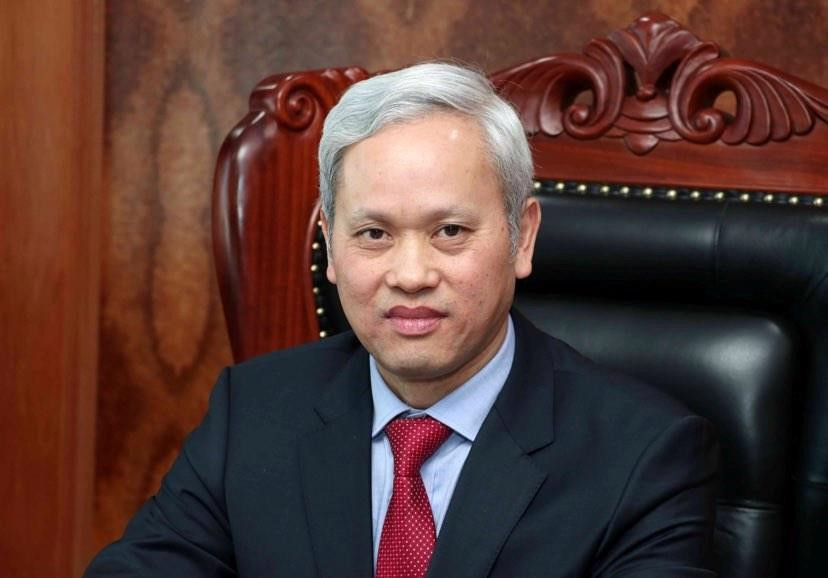
VietNamNet spoke with Nguyen Bich Lam, former Director General of the General Statistics Office (GSO), about economic development in 2022 and the forecast for 2023.
Can you comment on the GDP growth rate of 8.02 percent in 2022?
This is a very high growth rate, but it is only high compared with the low ground of 2021. Therefore, though the high growth rate is good news, it is obvious that the economy still cannot regain the growth rates of 2018-2019. Anyway, the growth rate is much better than in 2020 and 2021.
I can see positive factors when analyzing the three fields that contributed to the growth. The proportion of agriculture, forestry and seafood decreased, while the proportion of industry and construction increased. The service sector, though making up 41.3 percent, higher than in 2021, was still lower than 2018-2019.
This shows that the service sector has recovered but has not regained the momentum in the pre-pandemic period.
The inflation rate was 3.15 percent, much lower than the targeted 4 percent, despite food and foodstuff price increases in many countries.
The fact that the GDP growth rate was 2.5 times higher than the inflation rate is a ‘proud difference’ if noting that the whole world is facing 40-year high inflation and a low growth rate.
How did the support policies of the government and National Assembly play in the GDP growth rate in 2022?
The government was very good in designing support policies. You can see that the policies did not affect inflation. This is because the policies supported enterprises, but they did not pump more money into circulation.
However, I have to say that even though support policies have been implemented well, they are still below expectations. The disbursement of the 2 percent interest-rate subsidy package was still small.
The low 3.15 percent inflation rate in 2022 could be a foundation for Vietnam to control inflation well in 2023. What can you say about this?
In a recent meeting, GSO clearly explained why Vietnam could curb the inflation rate at 3.15 percent. One of the reasons was that the prices of strategic goods have not been raised. The price of electricity, healthcare and education services have not increased over the last 3-4 years.
However, it will not be feasible to continue to restrain prices. In 2023, Vietnam will have to adjust electricity and healthcare service prices to make them come closer to market prices. This will put pressure on inflation.
Fuel prices decreased significantly recently, but when China opens its economy, the prices may rise by 20 percent as calculated by Bloomberg.
Inflation in countries, including Vietnam, will bear the impact once demand increases. Meanwhile, Vietnam imports input materials in large quantities from China.
The base salary increase beginning July 1, 2023 will also affect inflation. Therefore, the goal of curbing inflation at 4.5 percent in 2023 will not be an easy task.
At the fifth Vietnam Economic Forum, Prime Minister Pham Minh Chinh asked to find the ‘balancing point between growth and inflation’, so as to avoid overly tightening credit which could harm the economy. What do you think is the role of the State Bank of Vietnam (SBV) in finding this point?
The inflation rate set by the National Assembly was below 4 percent, so the central bank had to pursue a tightened monetary policy. If the inflation goal for 2022 had been set at 4.5 percent instead of 4 percent, the credit limit would have been different.
I think the goal for inflation in 2023 should be 4.5-5 percent. We have to trade off between high growth and low inflation. To have high growth rates, we have to loosen monetary and fiscal policies, and this will certainly lead to inflation.
If the targeted inflation rate is higher, SBV will have more space to regulate monetary policy.
The growth rate in the fourth quarter of 2022 was lower than in Q2 and Q3, which was different from previous years. Do you think the 6.5 percent GDP target in 2023 is feasible?
Q4 witnessed a lower growth rate which reflected the influences of the world’s economy to Vietnam, an economy with high openness.
The target of 6.5 percent GDP growth rate is feasible but it is not an easy task if noting that the world’s economy and Vietnam’s important trade partners may fall into recession.
Luong Bang